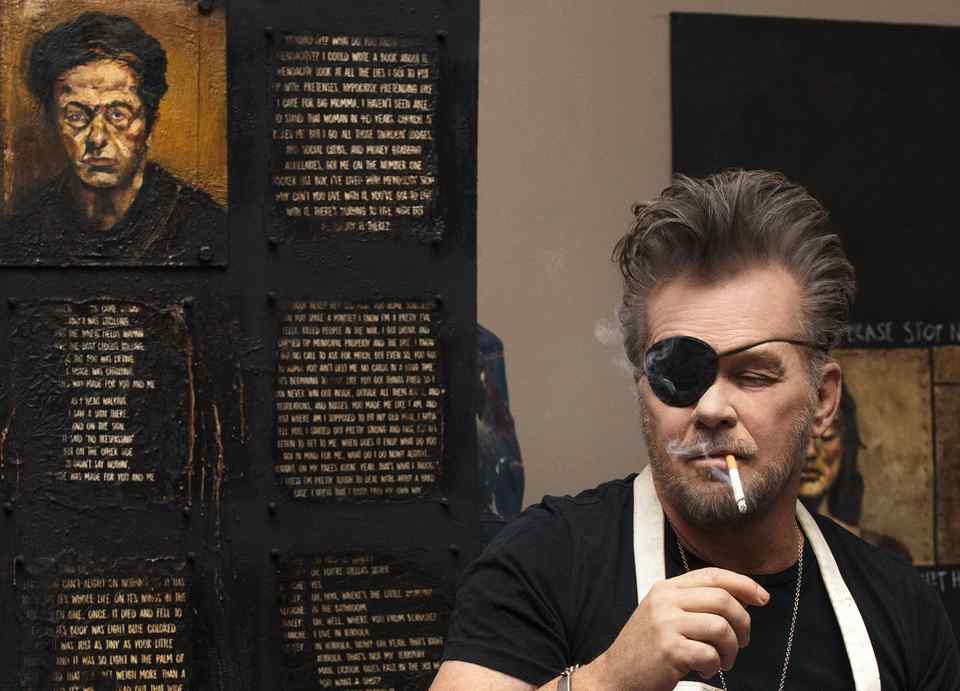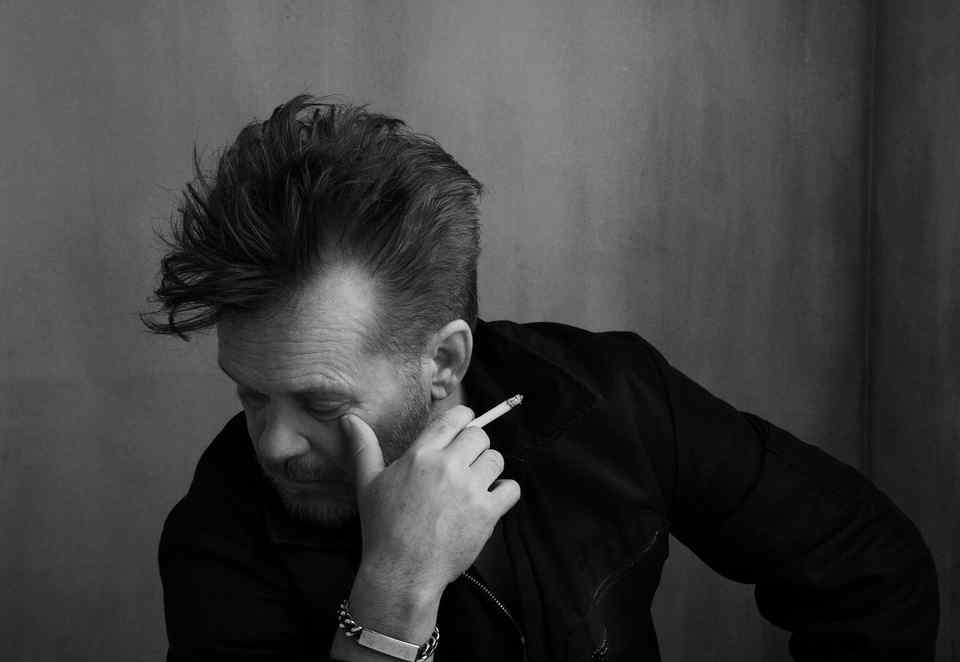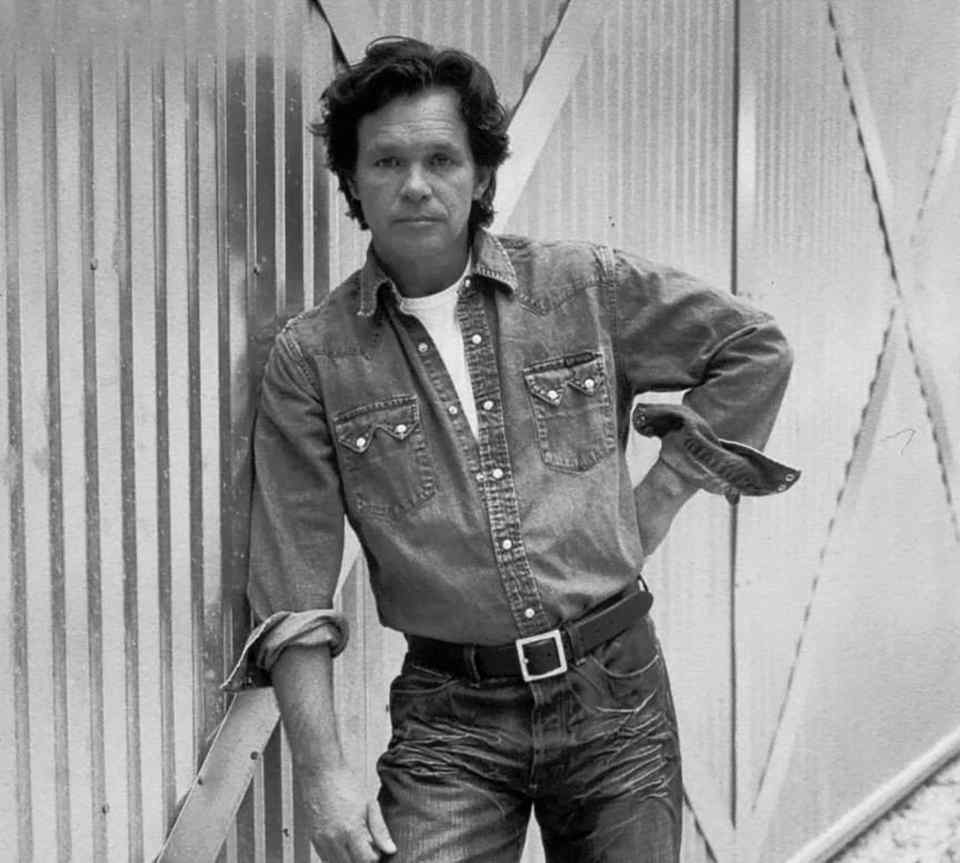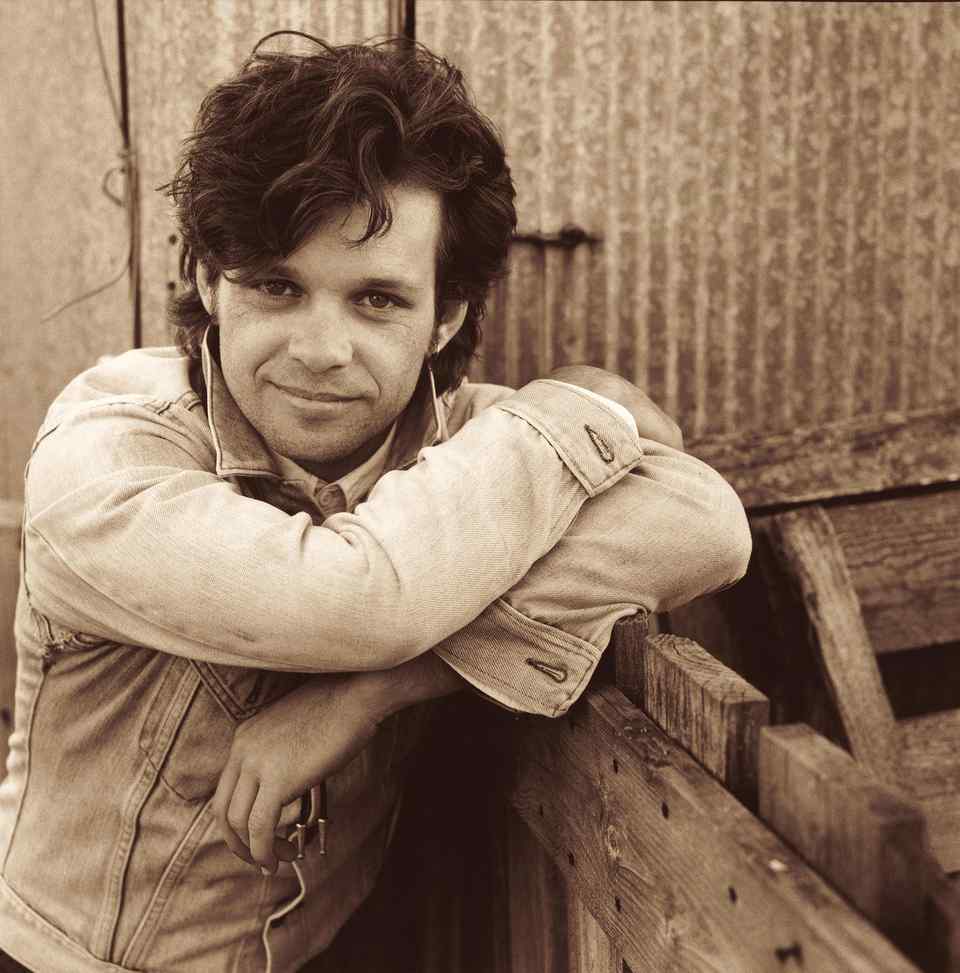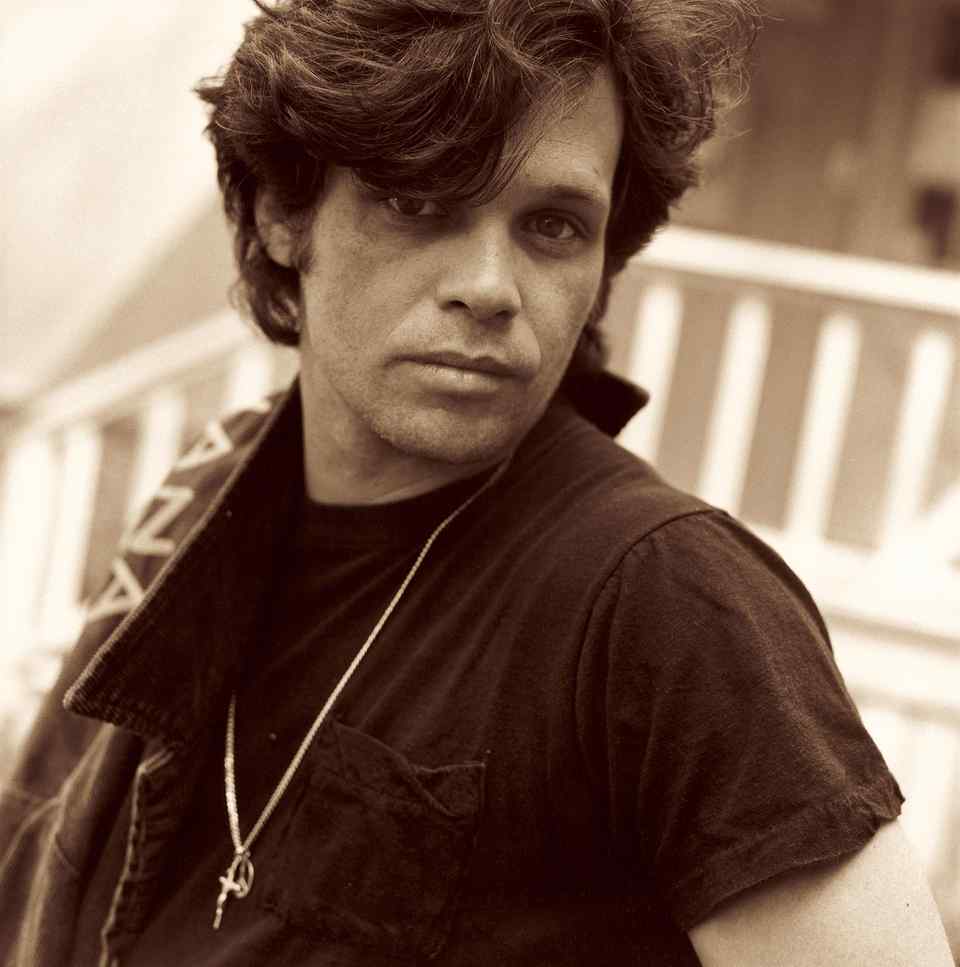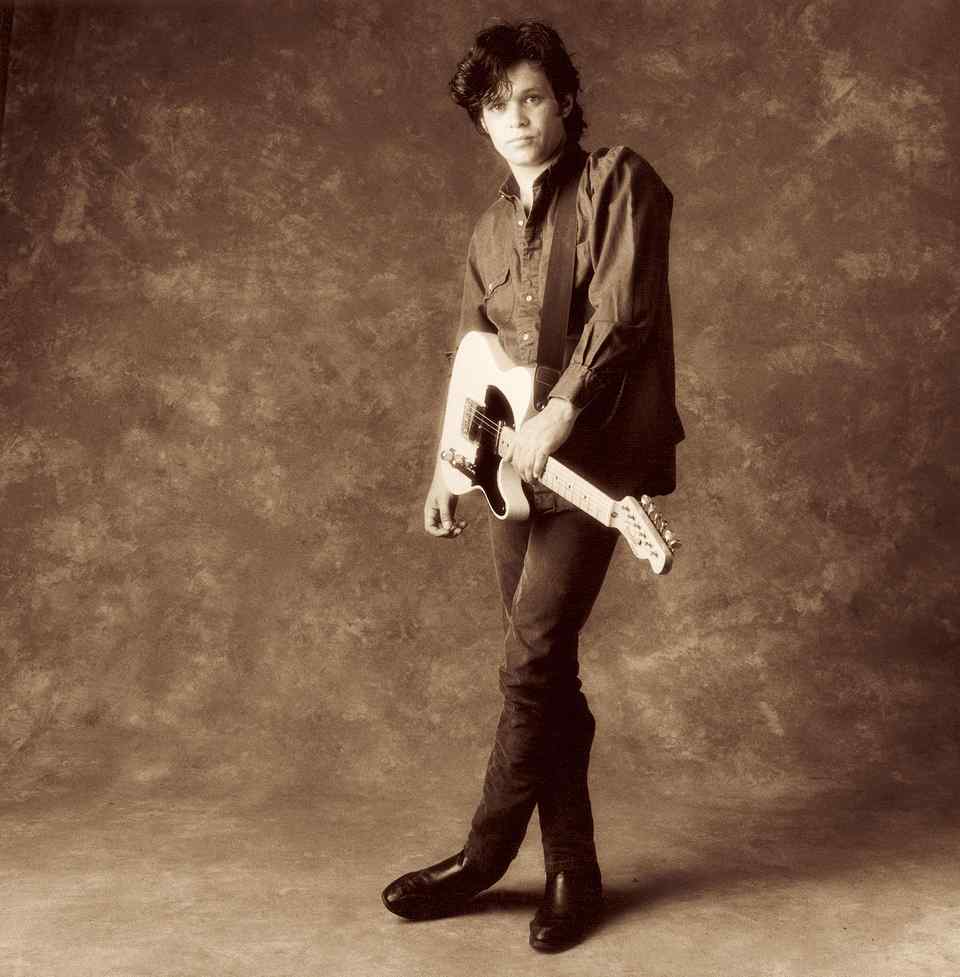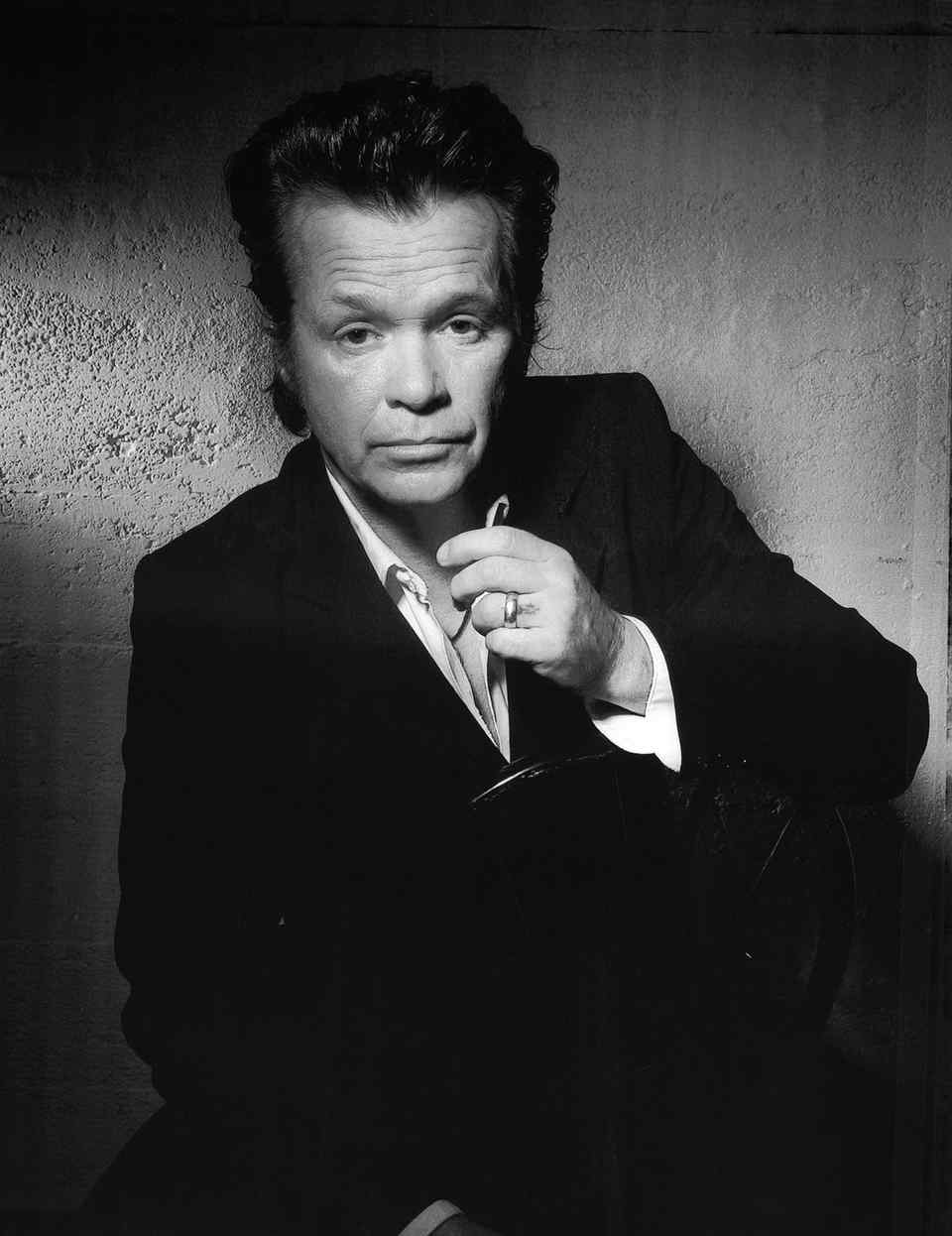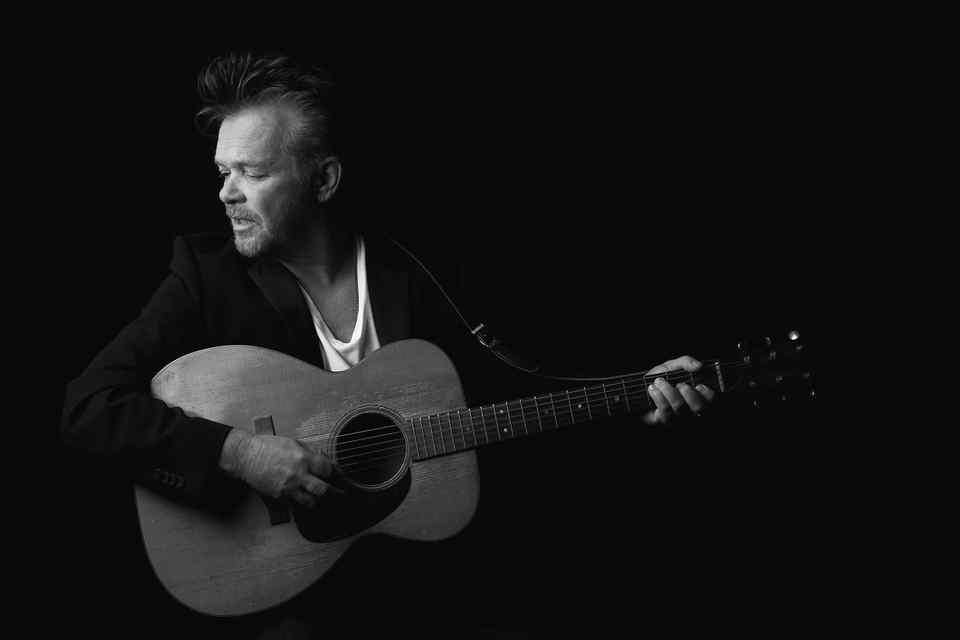9513.com No Better Than This 4 out of 5 Stars Review
the9513.com By Janet Goodman
After a 35 year career, a Grammy, and a place in the Rock and Roll Hall of Fame, John Mellencamp has released his 26th album, which is arguably one of his most creative efforts to date. No Better Than This, on Rounder Records, peels back his brash, rock and roller veneer to reveal a mature Americana artist with a gritty folk singer core and Dylan/Guthrie honesty, minus most of the politics.
Mellencamp earns high marks for walking away from his safe star image in order to make this stripped down, rootsy record. Egos were checked at the door, and T Bone Burnett emerged as still the only person to solely take the helm of a Mellencamp production. The artist confesses, “I trust him more than I trust myself, because my nature is to decorate the Christmas tree too much, to put too many ornaments on the tree. T Bone’s nature is to undress the tree.” No Better Than This is the second collaboration of the two music veterans – Life Death Love and Freedom being their first. The hotly sought-after producer became the singer/songwriter’s conscience in the studio. He encouraged him to shed that old persona: “We have to figure out how to grow old gracefully.”
All 13 songs were written by Mellencamp in 13 days in the spring of 2009, while on occasional breaks from his tour of minor league baseball parks with Bob Dylan and Willie Nelson. “I let the songs write themselves….and followed their path. I didn’t try to direct these songs to go any particular way.” But he did make a conscious effort to veer from popular music and go back to beginnings, which for him was folk music, describing the album as “180 degrees away from what music is today.” This not-overly-thought-out approach to songwriting naturally led to the organic recording choices for the album.
Later that year, they decided to record in three historic locales – a decision which gives this rich and rare authenticity. Savannah’s First African Baptist Church was chosen, with its legacy as the first black church in North America and a stopping point along the Underground Railroad. To this day, the church floors have tiny holes which provided air for slaves hidden in the basement below. Sun Records in Memphis served as another studio, and Mellencamp’s musicians stood on the same x’s that Sam Phillips laid out years earlier for back-up bands to Elvis Presley and Johnny Cash. They were also faithful to how it was done in room 414 at the Gunter Hotel in San Antonio, where blues legend Robert Johnson first recorded in 1936. Mellencamp insisted on standing in the same corner facing the street as Johnson had, and modern-day carpet was covered over with parquet flooring to re-create the original sound.
Musicians gathered around one post-depression RCA microphone, and their music was captured by a 1954 portable reel-to-reel Ampex field recording machine. After a couple of takes, the band would play it once through. There were no over dubs, no fancy studio wizardry. Mellencamp proudly said in an interview, “No way you can fix it in the mix, because there’s no mix.” This was a gutsy move for an artist who had documented most of his lifetime catalog of music in a state-of-the-art Indiana studio. The album has peaked at #10 on the Billboard 200 chart, and is the first mono release to reach the Top 10 since James Brown’s Pure Dynamite! Live at the Royal in 1964.
With his trademark raspy voice–of-everyman, Mellencamp delivers stories about love, the human condition and death. Opening with the very hopeful message of “Save Some Time to Dream,” he smartly sets the tone for what’s to follow. Fresh and uncluttered, backed by a cocktail-drum heart beat, his effortless lyrics lead the way: “Save some time for sorrow/’Cause it will surely come your way/Prepare yourself for failure/It will give you strength someday/Try to keep your mind open/And accept your mistakes/Save some time for living/And always question your faith.”
Raw and haunting, “The West End” is the only politically-sided piece, offering a fed-up commentary about people living in the western world. Robert Johnson’s blues spirit is conjured up in the vintage-pure “Right Behind Me,” which was authentically recorded in the famous room at the Gunter. The rockabilly title track is a fun-filled, stand-up bass slapping romp, while folky “Thinking About You” is simply acoustic guitar, focusing on the lyric about an innocent phone conversation with an old flame.
“No One Cares About Me” – a country lament – was recorded in the Georgia church, and spurred Mellencamp’s real-life, southern-style baptism there. One of the album’s most compelling songs is “Easter Eve.” Its charming, banjo-tinged melody is contrasted by an increasingly hardened lyric about a sudden but brutal interchange between his teenage son and a man looking for a fight, written in a traditional folk structure of back to back verses – in this case, 14 of them.
As a concept album, this one hits the mark. The low-fi, dirty recordings feel real and right. The big picture is spontaneous and not overly labored. But there are fleeting moments when this record sounds a bit un-ambitious rather than minimalist. No mixing means it is what it is, even at the expense of allowing his vocals to sometimes blend in and become more a part of the fabric than take the lead. Somewhat disappointing is the lack of stand-out tracks, but can be forgiven by the fact that crafting a commercially viable product was never on their agenda. Listeners will probably let it all slide after witnessing the graceful evolution of an artist who stays true to himself, never selling out, setting a new artistic standard that makes this feel like an important album.
After a 35 year career, a Grammy, and a place in the Rock and Roll Hall of Fame, John Mellencamp has released his 26th album, which is arguably one of his most creative efforts to date. No Better Than This, on Rounder Records, peels back his brash, rock and roller veneer to reveal a mature Americana artist with a gritty folk singer core and Dylan/Guthrie honesty, minus most of the politics.
Mellencamp earns high marks for walking away from his safe star image in order to make this stripped down, rootsy record. Egos were checked at the door, and T Bone Burnett emerged as still the only person to solely take the helm of a Mellencamp production. The artist confesses, “I trust him more than I trust myself, because my nature is to decorate the Christmas tree too much, to put too many ornaments on the tree. T Bone’s nature is to undress the tree.” No Better Than This is the second collaboration of the two music veterans – Life Death Love and Freedom being their first. The hotly sought-after producer became the singer/songwriter’s conscience in the studio. He encouraged him to shed that old persona: “We have to figure out how to grow old gracefully.”
All 13 songs were written by Mellencamp in 13 days in the spring of 2009, while on occasional breaks from his tour of minor league baseball parks with Bob Dylan and Willie Nelson. “I let the songs write themselves….and followed their path. I didn’t try to direct these songs to go any particular way.” But he did make a conscious effort to veer from popular music and go back to beginnings, which for him was folk music, describing the album as “180 degrees away from what music is today.” This not-overly-thought-out approach to songwriting naturally led to the organic recording choices for the album.
Later that year, they decided to record in three historic locales – a decision which gives this rich and rare authenticity. Savannah’s First African Baptist Church was chosen, with its legacy as the first black church in North America and a stopping point along the Underground Railroad. To this day, the church floors have tiny holes which provided air for slaves hidden in the basement below. Sun Records in Memphis served as another studio, and Mellencamp’s musicians stood on the same x’s that Sam Phillips laid out years earlier for back-up bands to Elvis Presley and Johnny Cash. They were also faithful to how it was done in room 414 at the Gunter Hotel in San Antonio, where blues legend Robert Johnson first recorded in 1936. Mellencamp insisted on standing in the same corner facing the street as Johnson had, and modern-day carpet was covered over with parquet flooring to re-create the original sound.
Musicians gathered around one post-depression RCA microphone, and their music was captured by a 1954 portable reel-to-reel Ampex field recording machine. After a couple of takes, the band would play it once through. There were no over dubs, no fancy studio wizardry. Mellencamp proudly said in an interview, “No way you can fix it in the mix, because there’s no mix.” This was a gutsy move for an artist who had documented most of his lifetime catalog of music in a state-of-the-art Indiana studio. The album has peaked at #10 on the Billboard 200 chart, and is the first mono release to reach the Top 10 since James Brown’s Pure Dynamite! Live at the Royal in 1964.
With his trademark raspy voice–of-everyman, Mellencamp delivers stories about love, the human condition and death. Opening with the very hopeful message of “Save Some Time to Dream,” he smartly sets the tone for what’s to follow. Fresh and uncluttered, backed by a cocktail-drum heart beat, his effortless lyrics lead the way: “Save some time for sorrow/’Cause it will surely come your way/Prepare yourself for failure/It will give you strength someday/Try to keep your mind open/And accept your mistakes/Save some time for living/And always question your faith.”
Raw and haunting, “The West End” is the only politically-sided piece, offering a fed-up commentary about people living in the western world. Robert Johnson’s blues spirit is conjured up in the vintage-pure “Right Behind Me,” which was authentically recorded in the famous room at the Gunter. The rockabilly title track is a fun-filled, stand-up bass slapping romp, while folky “Thinking About You” is simply acoustic guitar, focusing on the lyric about an innocent phone conversation with an old flame.
“No One Cares About Me” – a country lament – was recorded in the Georgia church, and spurred Mellencamp’s real-life, southern-style baptism there. One of the album’s most compelling songs is “Easter Eve.” Its charming, banjo-tinged melody is contrasted by an increasingly hardened lyric about a sudden but brutal interchange between his teenage son and a man looking for a fight, written in a traditional folk structure of back to back verses – in this case, 14 of them.
As a concept album, this one hits the mark. The low-fi, dirty recordings feel real and right. The big picture is spontaneous and not overly labored. But there are fleeting moments when this record sounds a bit un-ambitious rather than minimalist. No mixing means it is what it is, even at the expense of allowing his vocals to sometimes blend in and become more a part of the fabric than take the lead. Somewhat disappointing is the lack of stand-out tracks, but can be forgiven by the fact that crafting a commercially viable product was never on their agenda. Listeners will probably let it all slide after witnessing the graceful evolution of an artist who stays true to himself, never selling out, setting a new artistic standard that makes this feel like an important album.

